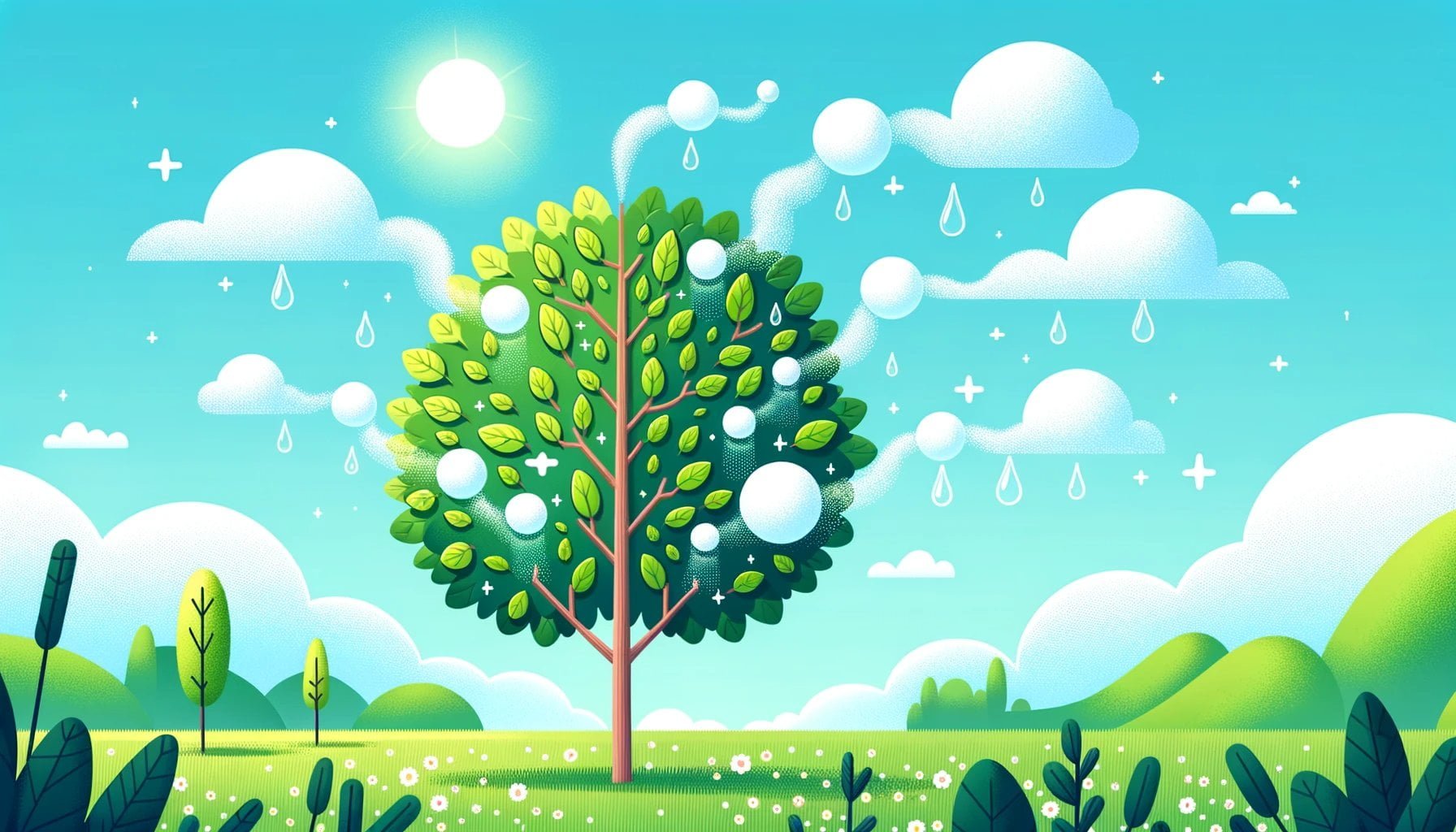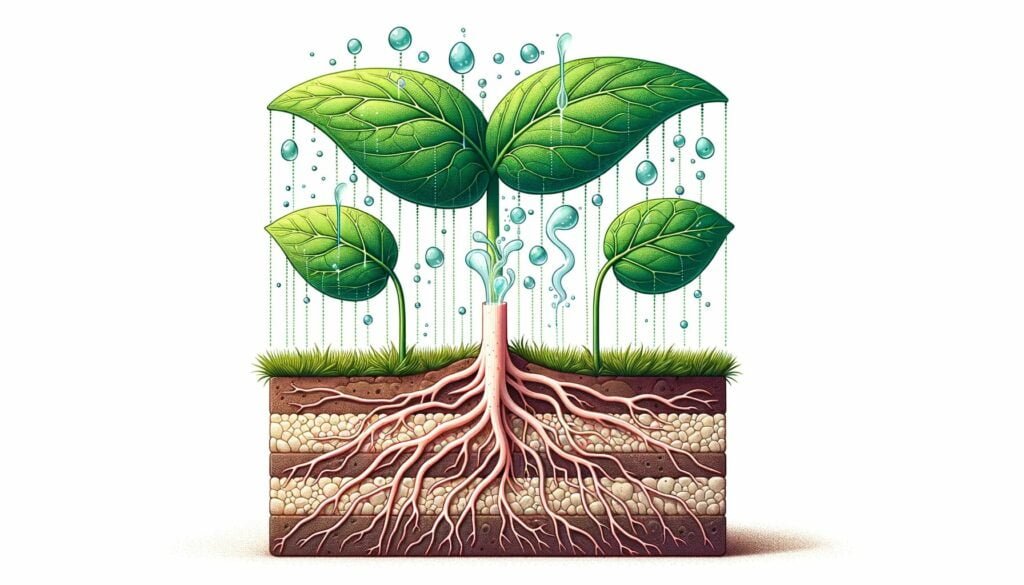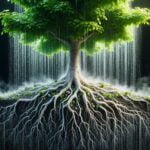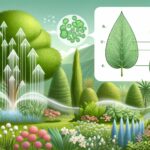In the study of the water cycle, understanding the process of transpiration plays a vital role in unraveling the intricate dynamics of ecosystems. Titled “Transpiration of Water: Locations and Factors Impacting Evaporation,” this article delves into the question of where water transpiration primarily occurs and explores the various factors that influence this crucial component of the water cycle. Drawing from years of experience and expertise in hydrology and environmental science, this piece provides a comprehensive overview of the impact of climatic conditions, vegetation types, and geographical factors on the transpiration process.
Where does transpiration of water occur?
Transpiration, the process by which plants lose water vapor through their leaves and stems, occurs in various locations within a plant. The primary location is through tiny openings on the surface of leaves and stems called stomata. These stomata act as gateways, allowing water molecules to evaporate into the atmosphere.
But why does transpiration occur in plants? Transpiration is a natural phenomenon that happens in all green plants. Although it seems like an extravagant loss of water, transpiration serves several important functions for plants. It cools plants, regulates the osmotic pressure of cells, and enables the mass flow of mineral nutrients throughout the plant.
The rate of transpiration can be influenced by a variety of environmental factors. Temperature, for example, affects the rate of transpiration. As temperature rises, the rate of transpiration increases due to the increased kinetic energy of water molecules within the plant. Similarly, humidity plays a role in transpiration. When the surrounding air is dry, the gradient between the plant’s internal water content and the atmosphere encourages water loss through transpiration. Light intensity also impacts transpiration, as increased light stimulates stomatal opening and can enhance the rate of water evaporation. Additionally, wind speed influences transpiration by causing the displacement of water vapor close to the stomata, allowing for a continuous diffusion of water molecules from the plant.
It’s important to note that transpiration is a passive process and does not require energy from the plant. The movement of water during transpiration is facilitated by the phenomenon known as transpiration pull. This mechanism relies on the cohesion and adhesion properties of water molecules, allowing them to be pulled up through the plant from the roots to the leaves.
The question remains: where does transpiration primarily occur? While transpiration can occur in any part of a plant, the majority of water loss takes place in the leaves. Leaves have a larger surface area compared to other plant parts, maximizing the exposure of stomata to the surrounding atmosphere. As a result, leaves are the primary sites of transpiration in most plants.
To measure transpiration, scientists use various methods. One common approach is to measure the rate of water loss from the plant over a specific period. This can be done through techniques such as gravimetric analysis, where the plant is weighed before and after a designated time to determine the amount of water lost. Another method involves using a potometer, a device that measures the rate of water uptake by a plant, which is directly related to transpiration.
In conclusion, transpiration of water occurs primarily in the leaves of plants through tiny openings called stomata. This natural process, influenced by factors such as temperature, humidity, light intensity, and wind speed, plays a vital role in plant cooling, nutrient transport, and even the water cycle. Understanding where and how transpiration occurs is essential for comprehending the intricate dynamics of the water cycle and ecosystem interactions. So the next time you see a plant, take a moment to appreciate the fascinating process happening within its leaves: transpiration.
To understand the fascinating intricacies of the water cycle, it is essential to delve into the process of transpiration. Transpiration, a crucial component of the water cycle, occurs when plants release water vapor through their leaves. This natural mechanism plays a pivotal role in regulating global climate patterns and maintaining the equilibrium of our planet’s ecosystems. To gain a deeper understanding of this remarkable phenomenon, click here: transpiration water cycle. Allow yourself to be captivated by the profound impact that transpiration has on our environment and the intricate web of connections that exist within the water cycle.
Transpiration in Aquatic Plants and Its Implications for Freshwater Ecosystems
Aquatic plants play a crucial role in the complex web of freshwater ecosystems. These plants not only contribute to the overall biodiversity but also have significant implications for water quality and ecosystem health. One key process that occurs in aquatic plants is transpiration, which involves the loss of water vapor from their leaves and stems. Understanding where transpiration occurs in aquatic plants and the factors that influence it is essential for comprehending the intricate dynamics of these ecosystems.
Where Does Transpiration Occur in Aquatic Plants?
Unlike terrestrial plants that primarily transpire through tiny openings called stomata on their leaves and stems, aquatic plants have a unique adaptation. They possess specialized structures called hydathodes, which are pore-like openings found on the leaf edges or stems. These hydathodes facilitate the process of transpiration in aquatic plants, allowing them to release water vapor into the surrounding environment.
Aquatic plants constantly take up water from their surroundings, absorbing it through their roots and distributing it to various parts of their structure. This water then travels through their vascular systems, eventually reaching the hydathodes. Once the water reaches these specialized structures, it is released as water vapor into the atmosphere, similar to the process of transpiration in terrestrial plants.
The rate of transpiration in aquatic plants is influenced by several factors, including wind speed, temperature, relative humidity, and light intensity. For instance, strong winds can enhance the evaporation of water vapor from aquatic plants, while high temperatures can increase the rate of transpiration. Additionally, light intensity plays a crucial role in the process, as it influences the photosynthesis rate and the overall water demand of the plants.
Implications for Freshwater Ecosystems
Transpiration in aquatic plants has significant implications for freshwater ecosystems. It affects essential aspects such as water availability, nutrient cycling, and overall ecosystem health. Let’s explore some of these implications in more detail:
1. Water Availability: The transpiration process regulates the movement of water within aquatic plants, ensuring the circulation and availability of water for various ecosystem functions. Changes in transpiration rates can impact the water balance within freshwater ecosystems, potentially affecting water availability for homes, rivers, and aquifers.
2. Nutrient Cycling: Aquatic plants provide habitats for diverse organisms and play a vital role in nutrient cycling within freshwater ecosystems. Transpiration helps maintain a healthy nutrient balance by facilitating the uptake and distribution of essential nutrients through the plant’s vascular system. This process supports the growth and productivity of both the aquatic plants themselves and other organisms in the ecosystem.
3. Oxygenation: Through the process of transpiration, aquatic plants release water vapor containing oxygen into the surrounding atmosphere. This contributes to oxygen levels in the surrounding water, providing a vital source of oxygen for aquatic organisms and supporting their survival. Additionally, the oxygenation process helps prevent the formation of stagnant zones and promotes the overall health of the ecosystem.
4. Filtration and Water Quality: Aquatic plants act as natural filters, removing pollutants and excess nutrients from the water through transpiration. This process helps improve water quality by reducing nutrient loading and preventing eutrophication. Moreover, the evaporation of water vapor by aquatic plants helps maintain salt balance in freshwater ecosystems, preventing salinization and preserving the delicate balance required for the survival of aquatic organisms.
In conclusion, transpiration in aquatic plants plays a significant role in freshwater ecosystems. The process occurs through specialized structures called hydathodes, and its rate is influenced by environmental factors such as wind speed, temperature, relative humidity, and light intensity. Understanding the locations and mechanisms of transpiration in aquatic plants is crucial for comprehending and managing the complex dynamics of freshwater ecosystems. By shedding light on the implications of transpiration for water availability, nutrient cycling, oxygenation, and water quality, we can strive to preserve and protect these vital ecosystems for future generations.
| Factors Influencing Transpiration in Aquatic Plants |
|---|
| Wind speed |
| Temperature |
| Relative humidity |
| Light intensity |
Factors Influencing Transpiration Rates and Variability
Transpiration, the process through which plants lose water vapor, is influenced by various factors that impact the rate and variability of this crucial component of the water cycle. Understanding these factors is essential for gaining insights into the intricate mechanisms of transpiration and its significance in ecosystem dynamics.
Wind Speed and Transpiration
One of the key factors influencing transpiration rates is wind speed or velocity. When wind speeds are higher, it removes water vapor from the surfaces of leaves and increases transpiration. This occurs because the movement of air enhances the evaporation of water from leaf surfaces, increasing the rate of transpiration. The higher the wind speed, the greater the water loss through transpiration.
Relative Humidity and Transpiration
Another vital factor that affects transpiration rates is relative humidity. Lower humidity levels reduce the concentration of water molecules in the air, creating a higher water potential gradient between the leaf and the air. This increased gradient promotes the movement of water molecules from the leaf to the drier air, enhancing transpiration rates.
Temperature and Transpiration
Temperature plays a significant role in influencing transpiration rates. Higher temperatures lead to increased molecular movement and evaporation of water from leaf cells, accelerating transpiration. Additionally, higher temperatures also stimulate the opening of stomata, the tiny openings present on the surface of leaves that facilitate gas exchange. This further contributes to increased transpiration rates.
Light Intensity and Transpiration
Light intensity is another fundamental factor that impacts transpiration rates. Higher light intensity increases the rate of photosynthesis in plants, stimulating the opening of stomata and the uptake of carbon dioxide. As stomata open, water vapor is released, resulting in higher transpiration rates. Therefore, light intensity significantly influences the rate at which transpiration occurs.
Soil Factors and Transpiration
Various soil factors also play a crucial role in regulating the rate of transpiration in plants. Soil water availability affects the absorption of water by roots, which, in turn, influences the water status of leaf cells and the opening and closing of stomata. Additionally, soil particles, soil temperature, and soil air composition also impact the absorption of water by roots and subsequently influence transpiration rates.
Overall, an array of factors can account for the variability in transpiration rates. A combination of wind speed, relative humidity, temperature, light intensity, and soil factors determines the extent to which plants lose water vapor through transpiration.
| Factors Influencing Transpiration | Effect on Transpiration |
|---|---|
| Wind Speed | Increases transpiration |
| Relative Humidity | Decreases transpiration |
| Temperature | Increases transpiration |
| Light Intensity | Increases transpiration |
| Soil Factors | Variable effect |
Understanding these factors and their impact on transpiration rates and variability is crucial for comprehending the water cycle and the intricate interactions within ecosystems. By studying and analyzing the complex processes of transpiration, we can gain valuable insights into the delicate balance of water movement and its significance for the health and sustainability of our environment.
How do wind speed, relative humidity, temperature, light intensity, and soil factors collectively shape the transpiration process in plants? Delve deeper into these factors to unravel the mysteries of transpiration rates and variability.
FAQ
Question 1
Where does transpiration of water primarily occur?
Answer 1
Transpiration of water primarily occurs in the leaves and stems of plants. Water vapor is released through tiny openings called stomata.
Question 2
What is the main purpose of transpiration?
Answer 2
The main purpose of transpiration is to cool plants, change the osmotic pressure of cells, and enable the mass flow of mineral nutrients.
Question 3
How does environmental factors affect the rate of transpiration?
Answer 3
Environmental factors such as temperature, humidity, light intensity, and wind speed can affect the rate of transpiration. Higher wind speeds, lower humidity, higher temperatures, and higher light intensity generally increase transpiration rates.
Question 4
Can transpiration impact water availability?
Answer 4
Yes, changes in transpiration rates can impact water availability for homes, rivers, and aquifers. Transpiration significantly affects the water flux from Earth’s terrestrial surface and plays a dominant role in the global water cycle.
Question 5
What role does soil play in transpiration?
Answer 5
Soil factors such as soil water, soil particles, soil temperature, and soil air affect the absorption of water by the roots, which influences the water status of leaf cells and the stomatal opening, thus impacting transpiration rates.
- Crypto Quotes’ Red Flags: Avoid Costly Mistakes - June 30, 2025
- Unlock Inspirational Crypto Quotes: Future Predictions - June 30, 2025
- Famous Bitcoin Quotes: A Deep Dive into Crypto’s History - June 30, 2025



















